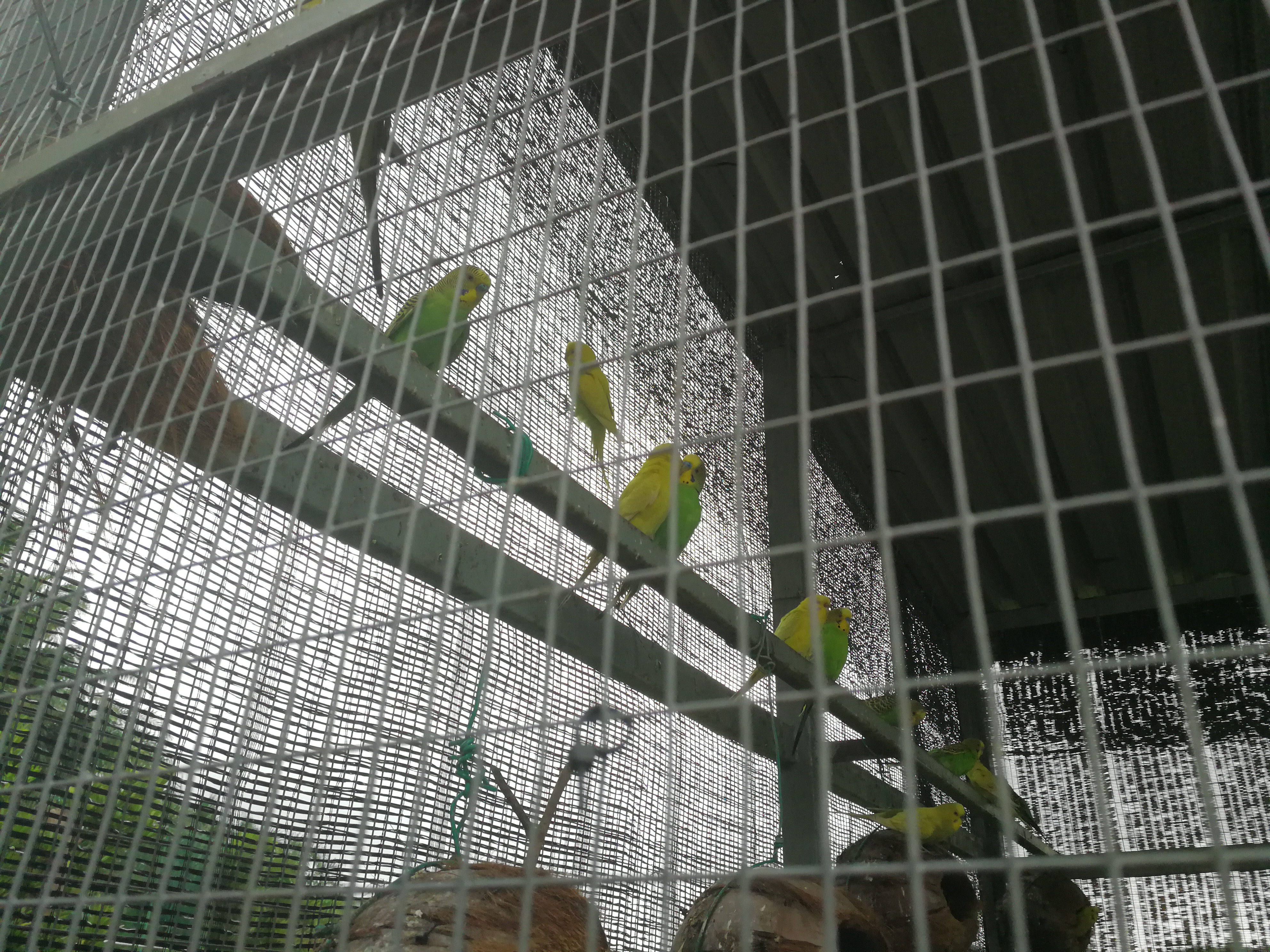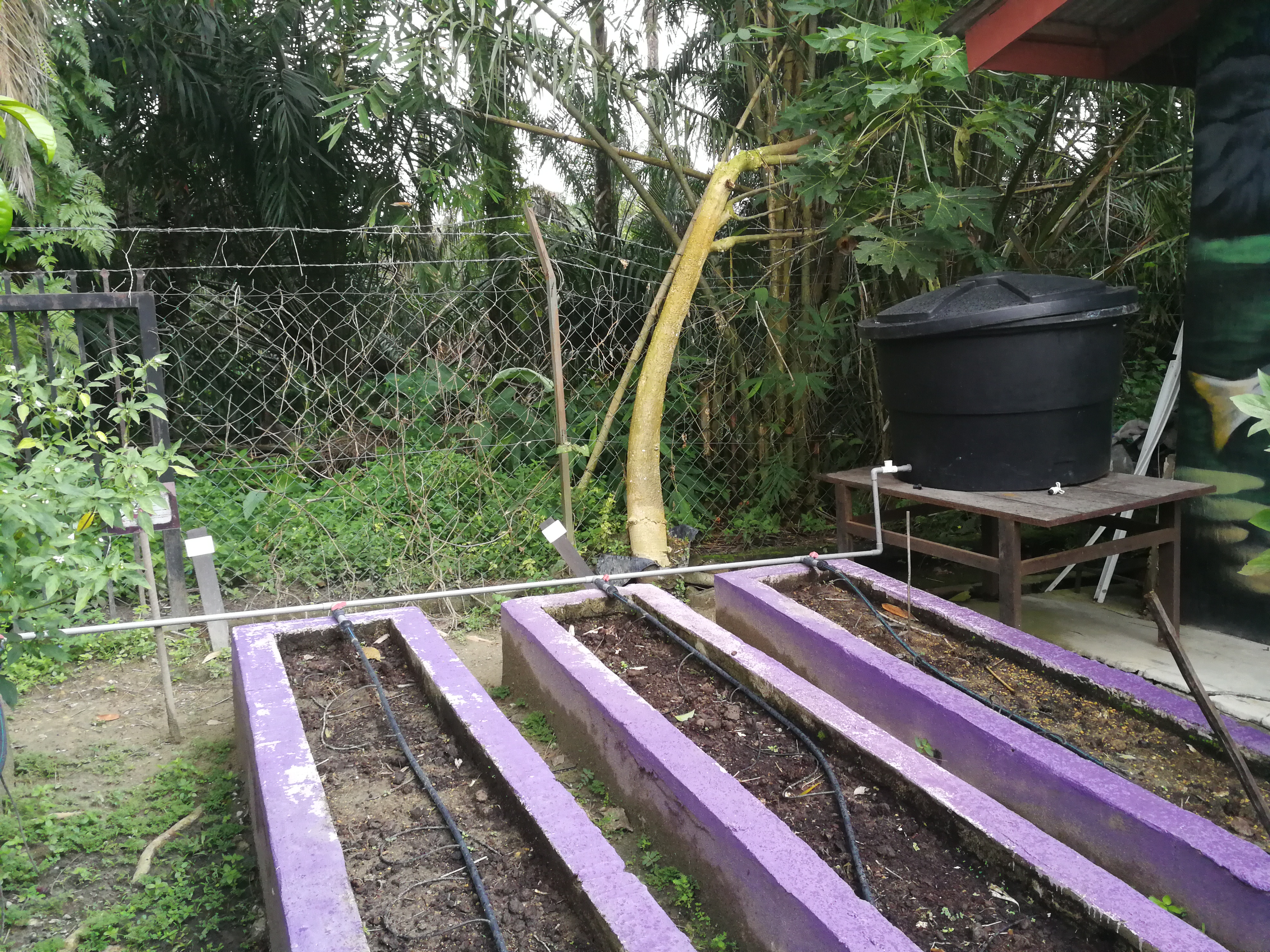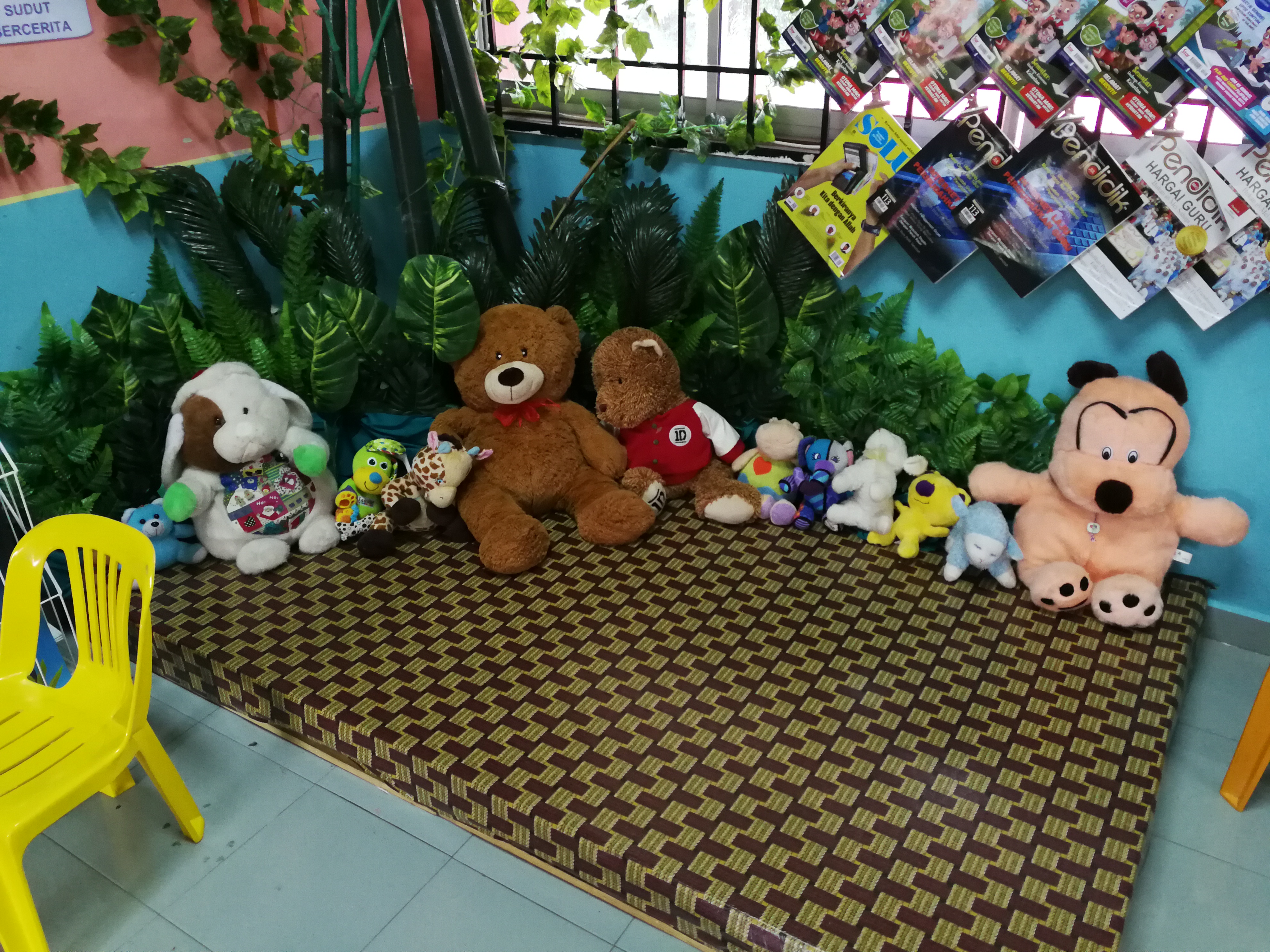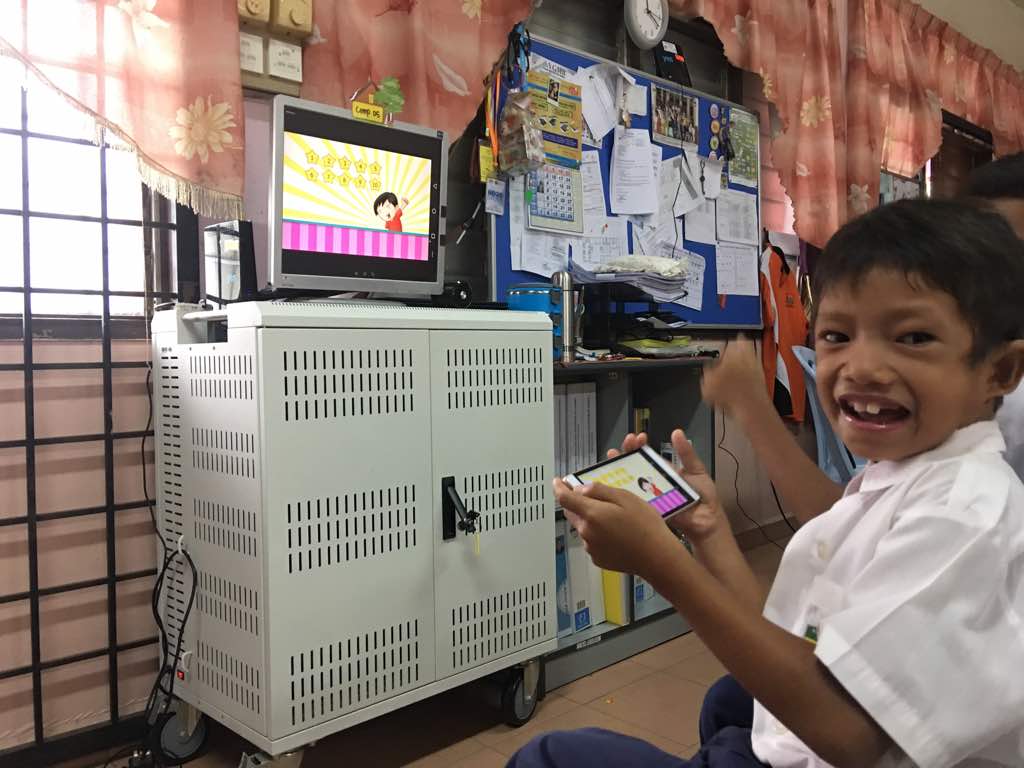[PHOTOS] This Orang Asli school may be on par with private schools, thanks to this headmistress

- 4.1KShares
- Facebook3.9K
- Twitter8
- LinkedIn19
- Email88
- WhatsApp91
On the long, winding road from KLIA to Cyberjaya, if you were to take an exit before the flyover sometime after McDonald’s and turn left under it, you’ll find yourself in Kota Warisan. This is where you can find several Temuan Orang Asli villages, a few minutes’ drive from Malaysia’s busiest airport.
Of interest here is a primary school called Sekolah Kebangsaan Sungai Melut (A), a place of learning for 67 Temuan children from four nearby Orang Asli villages: Kampung Kelinsing, Kampung Jambu, Kampung Bakok and Kampung Sungai Melut. After a short drive through a residential area and an oil palm plantation, a burst of colors will tell you that you’ve found the school. The welcome sign, situated next to some elephant and bird-shaped flowerpots made of recycled plastic bottles, may seem a little out of place in the middle of a plantation.

But what’s so interesting about this particular school?
Well, Cilisos received a tip from our reader, Eddie, who told us about a headmistress who went against the odds and transformed the school into an amazing home for Orang Asli students. Oh, and all this was done in her first year being assigned to the school.
For starters, there’s a mini zoo that’s filled with lovebirds…

…a well-cared for herb garden with about 50 species of herbs, all neatly labelled with QR codes…

…and everywhere you look, there’s delicate decorations made out of dried plants and woven mengkuang.

The school buildings are colorful, and it’s as if no wall is left empty: each of them are either painted with a mural, held an information-packed notice board or garnished with tiny booklets or other things to read that one might wonder if anyone had the time to read them all. To find out more about this unusual sight, we spoke to the headmistress herself, Puan Zaharah binti Salleh, and she took us on a tour of the whole school. And just when we thought we’ve seen everything…
There’s a hipster cafe-themed computer lab, among other things.
Within a few minutes of talking to Puan Zaharah, we saw that she has a really strong passion in providing her handful of students the best education she can offer. And that passion of hers is reflected in the various improvements she made to the school within the ten months she transferred here. For starters, she took us to see the school’s computer lab, and it looks like a legit hipster cafe. Seriously.




What’s more amazing about the lab was that barring the metal chairs and some shelves (which were bought from IKEA), everything else was built by the teachers. Puan Zaharah told us that they managed to buy a truckload of pallet wood from Port Klang, and the teachers worked day and night for two weeks to paint the room, make furniture out of the wood, print out those hipster-y pictures and make frames for them, and generally transform the lab into a hipster cafe.
All of this is done for under RM2,000, which made the whole thing even more impressive considering that sum included the IKEA furniture. The students are loving it, and Puan Zaharah told us that even students who had to take remedial lessons looked forward to those, as the lessons were held here. But that’s not the only new thing in her administration.
They also had an award winning library, called the Pusat Sumber Kitai Muhai, which is Temuan for ‘Our Library’. And the name is apt, since the library is used by the whole Sungai Melut community, not just the teachers and the students. Classes were held for the parents, and the parents returned the favor by helping the school compile a dictionary of the Temuan language. That particular work helped them win the Pertandingan Pusat Sumber Cemerlang Peringkat Kebangsaan, as it was the first time a school’s pusat sumber managed to complete the initiative.


We’ve already mentioned the mini zoo and the herb garden in the beginning, but there’s also a small orchid garden, a place to grow edible mushrooms, and a coop that houses wild chicken. All of these places have labels near the plants and animals bearing the name, scientific name and a QR code that you can scan if you want to know more about the featured species.

Behind the canteen, there’s a small garden dedicated to rearing organic vegetables and catfish. The water from the catfish is used to fertilize the vegetables, but since the school year has ended, there are neither vegetables nor catfish there. Apparently, according to Puan Zaharah, catfish eat a lot, so they decided to fry them all up at year’s end.

The produce from the garden, along with contributions of chickens and fish from the villagers, are cooked at a place called the Cafe D’Mama, a small kitchen situated at the back of the main block. The cook is Puan Zaharah herself, and she creates the menu from what’s available. Her cooking fed the Standard 6 students (and sometimes the teachers) when they had to stay at school for additional classes and during the exams. She also taught a few students how to cook here.

A key element in the change envisioned by Puan Zaharah was showcasing the Temuan identity of the school, and that was kept alive by the students through the sewang, a traditional Temuan dance; and the weavings found almost everywhere in the school.
There’s a corner of the school that specifically showcases the Temuan culture through displays of Temuan paraphernalia and a mural depicting the Temuan’s way of living, but the centerpiece of the corner is a traditional Temuan hut called the pundung, built from scratch by the parents of the students themselves, free of charge.


Yep, you’ve read that right. All of the stuff involving the parents so far, like compiling the Temuan words into a dictionary, the weavings, the pundun and the Temuan lore compiled in it were all done free of charge, with no strings attached. The PIBG game is strong in this school, and maybe the reason for that is the sense of the school not just belonging to the students and teachers, but also to the local community as a whole.
“All of us did a lot for this school. We incorporated the Temuan identity into this school, the pondok down there is filled with Temuan stories, and the walls depict the Temuan culture… so the Temuans feel like we’re appreciating their culture, their background. In this way, the school became a sort of second home for them.
“I can tell you that I’ve had no problems with vandalism or missing stuff. Even though these people did not contribute financially to the school, they helped me out with their energy, their support… all the Temuan stuff you see downstairs are built by them free of charge. I only had to hint that I would like some more weavings for the school, and they would show up with the weavings.” – Puan Zaharah.
By somewhat co-owning the school, Puan Zaharah revealed that the relationship between the school and the community had been great. Efforts to beautify the school are appreciated, and that which had been beautified, stay beautified. There’s even a computer placed next to the parking lot, unchained in any way, for the parents to come and use whenever they feel like it. And the school never had to replace that computer.

One might wonder why she went to such lengths to do all these things for this school. There’s actually a good reason for that, as in reality…
The school had to be as interesting as possible to get the students to come

Puan Zaharah had been teaching at conventional schools for 29 years, but when she was promoted to become a headmistress at this school back in February, she admitted that she panicked a little because none of her colleagues knew where it was, or even what to expect from an Orang Asli school. But she hit the ground running with this one.
“When I started work at this school, I decided that people will know of my school.
It’s because when I first got the letter that appointed me to this school, I asked the other teachers that I’m working with, where is this SK Sungai Melut? And nobody knows where it is, so first of all I think that I need to get people to take notice of this school.” – Puan Zaharah.
Within a few months at her new job, she realized that the first challenge she faced was to get the children to come to school. While the Key Performance Indicators (KPI) for conventional schools center around grade averages or the handling of disciplinary problems, for Orang Asli schools the KPI is to get the students to attend school at least 88% of the time. Even without the KPI in place, there’s another reason she needed the students to attend.

Puan Zaharah discovered that unlike her past students, she had to start from scratch with her new students. A majority of them don’t know their ABCs upon starting Standard 1, let alone read and write. Some only enrol in Standard 4, which only gives them around three years to learn how to read, write, do basic maths and learn some science concepts before taking their UPSRs. And most of that will only happen when they’re in school.
“Academically, the foundation for Asli students isn’t very strong. We want them to pass all subjects, but they’re stumbling in English. We’re trying to get them to read more, but once they’ve mastered that, they’ve still got to face English, and Mathematics.
It’s an uphill struggle for them. We have to start from scratch when it comes to teaching Asli students, and we have to make sure they learn enough to pass all six subjects in their UPSR.” – Puan Zaharah.
After visiting the parents of the students, she found that learning rarely happens at home. There is a culture among the community where people only think of the present, and the future is not something to be worried about.
While that makes a #deep Instagram description, it’s a dangerous attitude to take when there’s less and less opportunities for the Orang Asli to be self-sufficient these days. She’s currently trying to instill a culture of reading among the community, but she admitted that it’s not easy to start a culture. You can’t just go to a bunch of people and tell them to change the way they live their lives, so she’s starting small, by making the students want to come to school.

“If it was up to me, and if I had the money, I would like for my students to run happily towards school, for them to be excited about going to school, because the school will have a lot of stuff. If I can build a water park at this school, I will. That’s how much I want my students to want to come to school.” – Puan Zaharah
Now, she had managed to achieve a 92.7% attendance rate, and on top of that, her students would often rush home for lunch, and then rush back to school after school hours on their own accord. And most of the changes you’ve read about above were made possible using money out of the teachers’ own pockets, because…
It’s hard to get funding when you’re a small school

Earlier in the article we mentioned that SK Sungai Melut only had 67 students enrolled. While long-time Cilisos readers might think that’s not so bad compared to the school that only had one student, 67 students can barely make two regular school classes, much less a whole school. Some may argue that handling a school with less students would be a lot easier, but here’s the thing: Puan Zaharah revealed to us that the funding for schools are given on a per-head-per-item basis.
For example, let’s say that the funding for co-curriculum for a year is RM5 per student. Using the example, an average school with 1,200 students will have RM6,000 to plan their co-curriculum activities, but a small school of 50 students have to make RM250 last the whole year. There will also be per head funding for other things, like for Mathematics or upkeep, for example. This way of funding makes sense for regularly-sized schools, but smaller schools will suffer. While the numbers in this scenario may not be accurate, that’s the gist of the problem faced by SK Sungai Melut.
“If you were to look at the school now and what the school receives from the government each year, it doesn’t add up. You can’t achieve this much change with just RM5,000 plus a year. We have to use that money for a lot of things; office supplies, ink, tape, everything. But people don’t see that.” – Puan Zaharah.
Apart from the funding, the school doesn’t have any other forms of income; the canteen only serves RMT food, and because of that there’s no income from rent, either. They tried to make money by selling weaved keychains as souvenirs, but the revenue from that barely scratched their needs.

The PIBG could not do much in terms of money, so Puan Zaharah turned to companies to sponsor them as part of their Corporate Social Responsibility (CSR). One of them is Experian, who had been sponsoring them for years, in terms of signposts, notice boards, and bicycles to give as presents to students who do well in their exams. However, due to their small number of students, many other sponsors were discouraged.
“When we ask for funds, people see us as a small school. It’s not worth giving to us. There had been a few people who came to sponsor us, but they changed their minds and sponsored far bigger schools.” – Puan Zaharah.
To that statement, we asked her if she thinks her school is worth sponsoring.
“If it was me, I think that with all that we’ve been doing, it’s worth sponsoring us. We’d appreciate every cent and use it well for our students. We’re trying to give them a passion for reading, for learning.” – Puan Zaharah.
Due to funding problems, they adapted by cutting costs wherever they could, and as long as they can make something themselves, they will. To that regard, she’s really proud of her team of teachers, as not only are they willing to use their own money in bettering the school, but each of them had their own fields of expertise like woodworking and gardening that’s useful in their mission. And the teachers are passing on their skills to the students, because…
Grades aren’t everything with Cikgu Zaharah now

When we asked her how her students are doing academically, she admitted that when she first came to the school, she had high hopes of turning her students into top scorers. But after learning the current circumstances, she realized that she may have only two or three students that can pass all six subjects in the UPSR, another two who may pass one or two subjects, and the rest will possibly get straight Es. That depressed her at first, but it also changed her views on education.
“…we know that everything’s measured academically these days. Even the government is measuring students by their grades. If a student fails academically, can we say that he or she fails at life? Not really. We’ve heard of football legends, of successful farmers… So that’s what we’re trying to give them. We’re providing agricultural lessons, so that the kids can learn how to raise fish, to grow vegetables… The materials are all here. So this school isn’t just a place for them to learn academic stuff, we’re teaching them other stuff as well.” – Puan Zaharah.
And it would seem that changing directions is the way to go, as while they stumbled with mathematics and English, the students managed to achieve other things. Since there aren’t many students, the school tried to focus on sports that doesn’t require a big team, like archery, and this year they managed to secure first and second place in an archery tournament between schools at the district level, earning three of their students a spot in sports schools.
Their football team competed among other Orang Asli schools at the national level and came out third. And even though they have only around 20 Muslim students, they managed to put together a nasyid team (a genre of Islamic music) that became state-level champions.

The work of the teachers didn’t go unnoticed, either, as this year the school’s management was nominated for three out of four Best Practice Awards for Orang Asli Schools, when the normal practice was for each state to nominate one school for one category only.
That meant that this year, Selangor only nominated two schools for the awards while the other states each nominated four. Out of that three, SK Sungai Melut won two of them, for the categories of Participation of Parents and Community and the Management of the KEDAP Program, which is a program that involves holding classes for adults at their school.
Following that success, the school became a sort of model for other schools to follow, and education officials as well as teachers from other schools often visit them to learn more on how they can emulate what is being done there.
If you want to visit the school and see all of the progress for yourself, you can set up an appointment with Puan Zaharah by e-mailing her at [email protected].
- 4.1KShares
- Facebook3.9K
- Twitter8
- LinkedIn19
- Email88
- WhatsApp91



